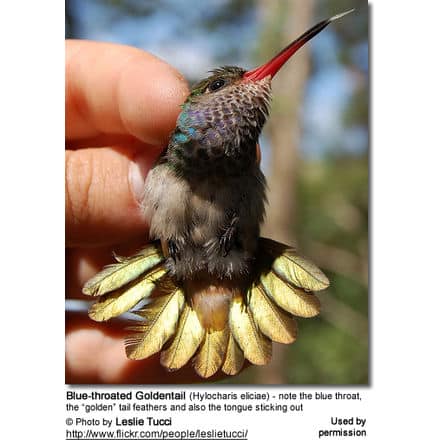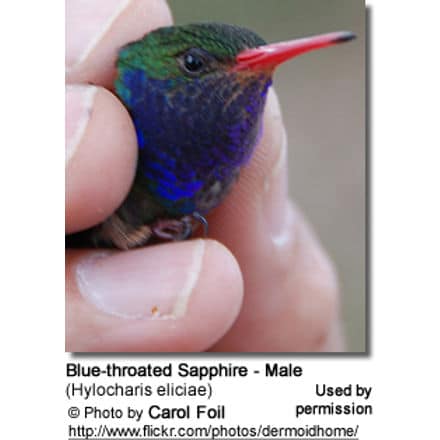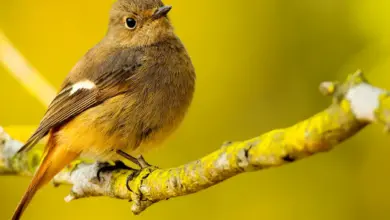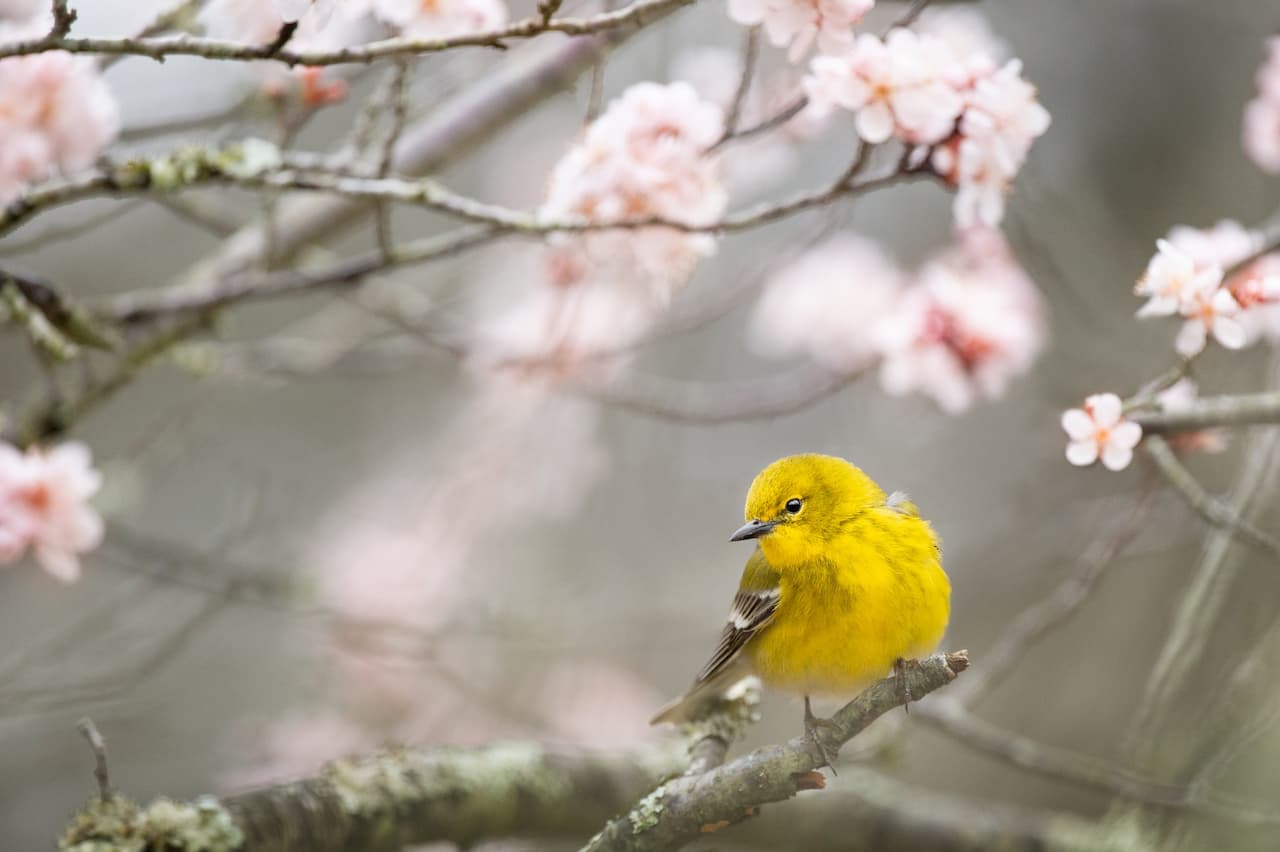Blue-throated Sapphires or Blue-Throated Goldentails
Hummingbird Information
Overview … Alternate (Global) Names
Distribution / Habitat … Subspecies, Ranges and ID
Description … Calls / Vocalizations
Breeding / Nesting … Diet / Feeding
The Blue-throated Sapphires (Hylocharis eliciae), also known as the Blue-Throated or Elicia’s Goldentails – are hummingbirds found in Mexico, Central America and extreme northern South America.
Distribution / Habitat
The Blue-throated Sapphires have two separate populations, which merge in Nicaragua:
… the first population occurs along the South Atlantic slope from the State of Veracruz in southeastern Mexico south through Belize, Guatemala, Honduras, Nicaragua to Costa Rica.
… a second population stretches along the Pacific slope from eastern Oaxaca in southwestern Mexico south through Guatemala, El Salvador, Nicaragua, Costa Rica, Panama to northwestern Colombia.
These mostly resident (non-migratory) hummingbirds will make small local movements in response to the flowering seasons of their favorite feeding plants.
These hummingbirds are found in humid to semi-humid forests, in high evergreen forest and forest borders and second-growth woodlands. They generally remain at elevations between 2,500 – 3,300 ft (~750 and 1,000 m).
Subspecies and Ranges:
- Blue-throated Goldentail (Hylocharis eliciae eliciae – Bourcier and Mulsant, 1846) – Nominate Race
- Range: Southeastern Mexico through Belize south to southern Costa Rica.
- Blue-throated Goldentail (ssp. earina) ( Hylocharis eliciae earina – Wetmore, 1967)
- Range: Western Panama, including Coiba Island and the islands in Bay of Panama, south to extreme northwestern Colombia.
Description
Size
This species has a total length of 3.5 inches or 9 cm (measured from tip of bill to end of tail). The bill alone is about 0.75 inches or 1.90 cm long. The male weighs about 0.14 oz or 4.1 g; the female weighs, on average, 0.13 oz or 3.6 g.
Plumage Details / Adults
The back is green turning bronze-green on the tail. The crown is bright green. The throat and upper chest is violet. The chest is bronzy green and the sides have green flecks. The tail feathers are bright gold.
Gender ID
The male’s bill is red with a black tip. The female’s bill is blackish above and red below.
The male has a glittering bluish-violet throat patch (gorget). The female’s throat is greyish with green or blue spots. Her plumage below is paler.
Other Physical Details
The almost completely straight bill is broad at the base.
Similar Species
It is similar to the Rufous-tailed Hummingbird (Amazilia tzacatl), but the latter is larger in size and the tail is longer and more cinnamon colored; and the chest and throat are green.
Diet / Feeding
The Blue-throated Sapphires Hummingbirds primarily feed on nectar taken from a variety of brightly colored, scented small flowers of trees, herbs, shrubs and epiphytes – in particular, favoring the flowers of Stachytarpheta, Hamelia, Heliconia, Renealmia, Thalea, Inga, Psidium and some epiphytes.
They use their long, extendible, straw-like tongues to retrieve the nectar while hovering with their tails cocked upward as they are licking at the nectar up to 13 times per second. Sometimes they may be seen hanging on the flower while feeding.
Many native and cultivated plants on whose flowers these birds feed heavily rely on them for pollination. The mostly tubular-shaped flowers actually exclude most bees and butterflies from feeding on them and, subsequently, from pollinating the plants.
They may also visit local hummingbird feeders for some sugar water, or drink out of bird baths or water fountains where they will either hover and sip water as it runs over the edge; or they will perch on the edge and drink – like all the other birds; however, they only remain still for a short moment.
They also take some small spiders and insects – important sources of protein particularly needed during the breeding season to ensure the proper development of their young. Insects are often caught in flight (hawking); snatched off leaves or branches, or are taken from spider webs. A nesting female can capture up to 2,000 insects a day.
Males establish feeding territories, where they aggressively chase away other males as well as large insects – such as bumblebees and hawk moths – that want to feed in their territory. They use aerial flights and intimidating displays to defend their territories.
Breeding / Nesting
Hummingbirds are solitary in all aspects of life other than breeding; and the male’s only involvement in the reproductive process is the actual mating with the female. They neither live nor migrate in flocks; and there is no pair bond for this species. Males court females by flying in a u-shaped pattern in front of them.
The Blue-throated Sapphires males typically perform in leks (courtship rituals) with up to 10 other males, singing and displaying to attract females.
He will separate from the female immediately after copulation. One male may mate with several females. In all likelihood, the female will also mate with several males. The males do not participate in choosing the nest location, building the nest or raising the chicks.
The female is responsible for building the cup-shaped nest out of plant fibers woven together and green moss on the outside for camouflage in a protected location in a shrub, bush or tree. She lines the nest with soft plant fibers, animal hair and feather down, and strengthens the structure with spider webbing and other sticky material, giving it an elastic quality to allow it to stretch to double its size as the chicks grow and need more room. The nest is typically found on a low, skinny horizontal perch at a height between 6 – 14 feet (1.8 – 4.3 meters)
The average clutch consists of two white eggs, which she incubates alone, while the male defends his territory and the flowers he feeds on. The young are born blind, immobile and without any down.
The female alone protects and feeds the chicks with regurgitated food (mostly partially-digested insects since nectar is an insufficient source of protein for the growing chicks). The female pushes the food down the chicks’ throats with her long bill directly into their stomachs.
As is the case with other hummingbird species, the chicks are brooded only the first week or two, and left alone even on cooler nights after about 12 days – probably due to the small nest size. The chicks leave the nest when they are about 20 days old.
Calls / Vocalizations / Sounds
Their songs are described as tssir,chi-ti-ti-ti-tit or tssir chi-chi chi-chi chi-chi-ch-it-it.
Alternate (Global) Names
Chinese: ?????? … Czech: Kolibrík zlatoocasý … Danish: Gyldenhalet Safir, Hylocharis sapphirina … Dutch: Goudstaartsaffierkolibrie … Finnish: Varjosafiirikolibri … French: Saphir d’Elicia … German: Goldschwanzsaphir, Goldschwanz-Saphir, Goldschwanz-Saphirkolibri … Italian: Codadoro golablu, Colibrì di Elisa … Japanese: ougonsafaiahachidori … Norwegian: Gullhalekolibri … Polish: Szafirek zlotosterny … Russian: ???????????? ?????? … Slovak: kolibrík zlatochvostý … Spanish: Colibrí Calidorado, Colidorada de cuello azul, Zafiro Colidorado, Zafiro de Elicia, Zafiro de Garganta Azul, Zafiro Garganta Azul, Zafiro Gorgiazul, Zafiro Gorjiazul … Swedish: Guldstjärtssafir
Metabolism and Survival and Flight Adaptions – Amazing Facts
Species Research by Sibylle Johnson
Please Note: The articles or images on this page are the sole property of the authors or photographers. Please contact them directly with respect to any copyright or licensing questions. Thank you.







